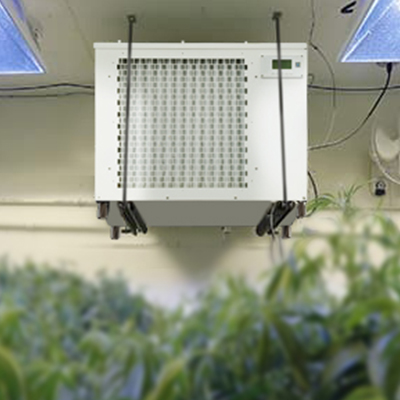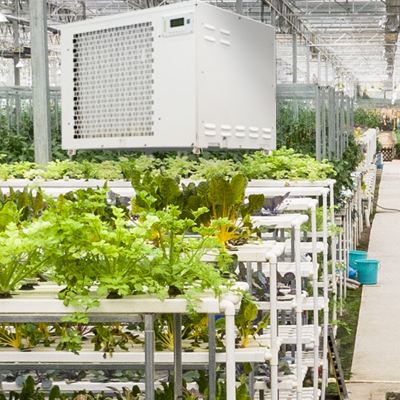Dehumidifying a greenhouse involves controlling and reducing excess moisture to create an optimal growing environment for plants. High humidity levels can lead to mold, disease, and poor plant growth.
Methods to dehumidify a greenhouse
1. Natural Ventilation:
- Use roof vents, sidewall vents, louvers, or ridge vents to promote natural airflow. Proper ventilation allows moist air to escape and fresh, drier air to enter the greenhouse.
2. Fans and Circulation:
- Install fans to improve air circulation. Circulating air helps distribute humidity evenly and reduces the risk of stagnant pockets of humid air.
3. Shade Cloth:
- Shade cloth can help reduce direct sunlight and heat, which can contribute to high humidity levels. Reduced heat can decrease the rate of water evaporation, thereby lowering humidity.
4. Proper Watering Practices:
- Overwatering can elevate humidity levels. Water plants only when necessary, and avoid splashing water onto the ground to minimize evaporation.
5. Mulching:
- Use mulch around plant bases to reduce soil evaporation and moisture loss, which can help maintain lower humidity levels.
6. Drip Irrigation:
- Drip irrigation delivers water directly to plant roots, minimizing surface evaporation and reducing humidity.
7. Exhaust Fans:
- Install exhaust fans to actively remove humid air from the greenhouse. Exhaust fans can be controlled by temperature or humidity sensors to activate when conditions are too moist.
8. Dehumidifiers:
- Commercial-grade or industrial dehumidifiers can effectively control humidity in larger greenhouses. These industrial dehumidification units work similarly to home dehumidifiers by removing moisture from the air.
9. Desiccant Dehumidifiers:
- Desiccant dehumidifiers use a drying agent to absorb moisture from the air. They are effective in extremely humid conditions and can handle larger volumes of air.
10. Air Conditioning and Cooling:
- Air conditioning systems can help reduce humidity levels by cooling the air and causing moisture to condense. Cooling systems can work in conjunction with ventilation.
11. Heat Recovery Ventilation (HRV):
- HRV systems use the heat energy from outgoing air to precondition incoming air, reducing humidity while conserving energy.
12. Hygrometers and Controllers:
- Monitor humidity levels using hygrometers and use controllers to automate the operation of fans, exhaust systems, or dehumidifiers based on preset humidity thresholds.
13. Plant Selection and Spacing:
- Choose plants that thrive in your local climate and match their water needs accordingly. Proper spacing helps prevent overcrowding and allows for better air circulation.
Combining multiple strategies based on the size of your greenhouse, climate conditions, and plant requirements will help you create an ideal dehumidification plan for your specific needs. Regular monitoring of humidity levels and adjusting your methods as needed is crucial for maintaining a healthy greenhouse environment.
What is the ideal humidity for a greenhouse?
The ideal humidity level for a greenhouse can vary depending on the types of plants being grown, the stage of growth, and the specific requirements of the plants. However, as a general guideline, most greenhouse plants thrive within a relative humidity range of 50% to 70%. Here's a breakdown of ideal humidity levels for different stages of plant growth:
1. Germination and Seedlings:
During the germination stage and for young seedlings, slightly higher humidity levels (around 70-75%) are often recommended to provide the necessary moisture for successful sprouting and early growth.
2. Vegetative Growth:
As plants enter the vegetative growth phase, humidity levels can be maintained between 60% and 70%. This range helps support healthy leaf development and overall growth.
3. Flowering and Fruiting:
During the flowering and fruiting stages, it's often advisable to lower humidity levels to around 50-60%. This helps prevent issues like mold and encourages proper pollination and fruit development.
4. Cool-Season and Tropical Plants:
Some plants, particularly those with tropical origins, might require higher humidity levels, closer to the upper end of the recommended range.
It's important to note that maintaining constant humidity levels is challenging due to changes in outdoor weather conditions, temperature fluctuations, and the specific needs of different plants.
Post time: Aug-11-2023
 +86-13376814803
+86-13376814803  robert@hzhongtai.com
robert@hzhongtai.com 















